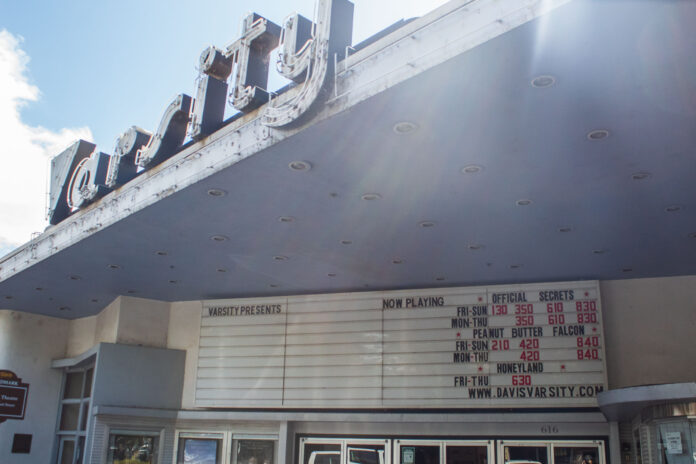Tarantino mixes reality, fiction in final film
Fans of Hollywood icon Quentin Tarantino waited in anticipation this summer for the director’s (supposed) final movie of his career, “Once Upon a Time … In Hollywood.” Set in 1969 Los Angeles, the movie follows a few days in the life of Rick Dalton (played by Leonardo DiCaprio) and Cliff Booth (Brad Pitt), an actor and his stunt man duo, respectively. As Dalton’s career as a cowboy television star begins to diminish to one-time appearances as television villains, Dalton and Booth’s dynamic transforms into one of stewardship and oddly endearing friendship.
Booth — muscular and cool with a potentially criminal background — begins acting as Dalton’s chauffeur and handyman as Dalton emotionally grapples with the potential end of his once-shining career. His professional decline becomes all the more humiliating as up-and-coming starlet and covergirl Sharon Tate (Margot Robbie) and director Roman Polankski (Rafał Zawierucha) move in next door, renting the gated home that sits above his.
The introduction of Tate and Polanski is where the movie takes a historical-fiction turn (emphasis on the fiction), and makes Tarantino an omnipotent director of the past. Tarantino is not a newcomer to revisionist history and storytelling, as his characters Dalton and Booth become embedded in — and alter — the infamous events of the Manson Family’s brutal murder of Tate, Polankski and visiting friend Jay Sebring (Emile Hirsch). For those unaware of the Manson Family and their star-studded killing spree, a Wikipedia read is recommended in order to grasp the film in its entirety.
DiCaprio delivers comical, emotionally dramatic scenes of Dalton stressing over forgetting lines in his trailer, another example of DiCaprio’s sheer talent as an actor. Meanwhile, Booth picks up a flirting teenage hitchhiker named Pussycat (Margaret Qualley), who is, coincidentally, a member of the Mason Family.
While returning Pussycat to her home, Dalton visits Spahn Ranch, where the psychedelic-consuming, sex-having, apocalypse-preparing and murder-doing Mason Family is currently residing. After becoming acquainted with the family by serving a member a knuckle sandwhich or two, by coincidence and by Tarantino’s doing, Booth later violently interferes in the Manson Family’s attempted murder at the Tate residence — cue the quintessential, gruesome violence expected in a Tarantino film.
“Once Upon A Time … In Hollywood” is ultimately charming. It holds the same choppiness of scenes, distortion and quirkiness essential to a Tarantino film. The cast was picked to perfection, and each delivery is masterful. While it does not equate to the same level of talent held in films like “Pulp Fiction,” Tarantino did not end his film career at a low point.
And Tarantino’s alteration of history is not vapid or meaningless. The Tate Murders of 1969 are often quoted as the end of the Golden Age of Hollywood — Dalton’s quivering career serves as a testament. With the starlet saved and becoming a new neighborly acquaintance of Dalton, the Golden Age may live on in Tarantino’s reality. He may be commenting on what the movie industry could have been, or should be in his mind. Or it may be Tarantino’s attempt to say goodbye to the end of his era as a director.
Written By: Caroline Rutten — arts@theaggie.org




